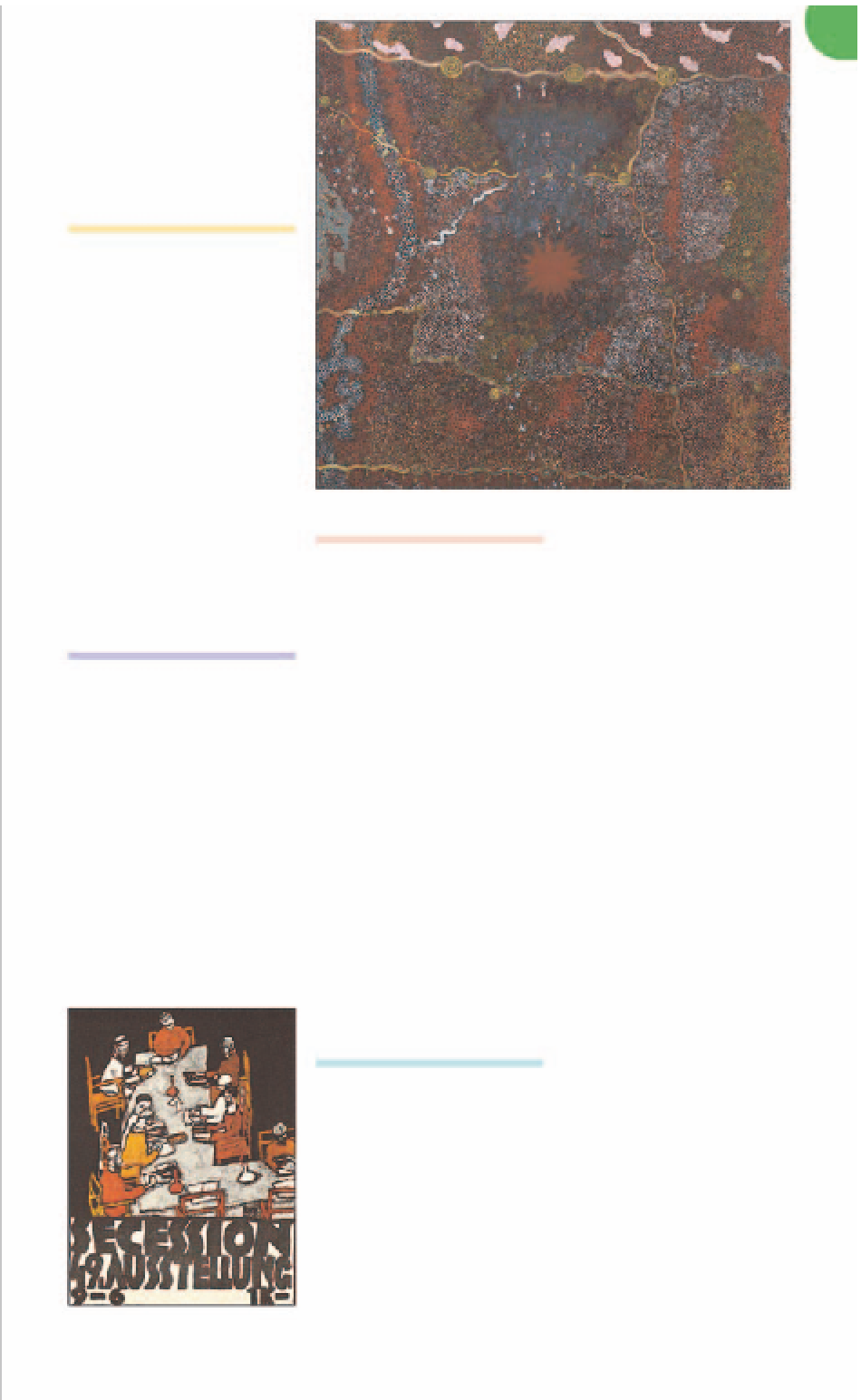Travel Reference
In-Depth Information
prints constitute this collection
with pieces by Charles Kerry,
Charles Bayliss and Harold
Cazneaux, the latter a major
figure of early 20th-century
Pictorialism. Such international
photographers as Muybridge,
Robert Mapplethorpe and Man
Ray are also represented here.
ASIAN ART
This collection is one of the
finest in Australia. Chinese art
is represented by a chronolog-
ical presentation of works
from the pre-Shang dynasty
(c.1600-1027 BC) to the 20th
century. The Ming porcelains,
earthenware funerary pieces
(mingqi)
and the sculptures
deserve close attention.
The Japanese painting col-
lection contains fine examples
by major artists of the Edo
period (1615-1867). The Indian
and Southeast Asian holdings
consist of lacquer, ceramics
and sculptures, with painting
displays changing regularly.
Warlugulong
by Clifford Possum Tjapaltjarri and Tim Leura Tjapaltjarri
to new media forms, and the
endurance of “Aboriginality”,
are repeatedly demonstrated.
The significant early purchases
are mainly natural pigment
paintings on bark and card,
often containing a simple, figu-
rative motif of everyday life.
Also of interest are two sand-
stone carvings by Queens-
landers Linda Craigie and
Nora Nathan, the only women
artists in the collection until
1985. Topographical, geo-
graphical and cultural mapping
of the land is displayed in a
number of intricate land-
scapes. The qualities and
forms of the natural world,
and the actions and tracks of
Ancestral Beings, are coded
within the images. These
paintings are maps of
Ancestral journeys and events.
The bark painting
Three
Mimis Dancing
(1964) by
Samuel Wagbara examines the
habitation of the land by
Spirits and the recurrence of
the Creation Cycles.
Pukumani Grave Posts Mel-
ville Island
(1958) is a solemn
ceremonial work dealing with
death, while the eminent Emily
Kame Kngwarreye honours the
land from which she comes.
The canvases of her intricate
dot paintings, created using
new tools and technology,
appear to move and shimmer,
telling stories of the animals
and food to be found there.
CONTEMPORARY ART
The significance of the art of
our time is reflected in the
collection of recent work by
international and Australian
artists, only a fraction of
which can be displayed at
any time. The collection high-
lights the artistic themes that
have been central to art
practice of the last three
decades. Works by Australian
artists, such as
Pataphysical
Man
(Imants Tillers, 1984)
and
Suspended Stone Circle II
(Ken Unsworth, 1988), are on
display alongside pieces by
notable international artists of
the calibre of Cindy Sherman,
Yves Klein, Philip Guston and
Anselm Kiefer. The gallery also
has a contemporary project
space that features temporary
experimental installations.
PRINTS AND DRAWINGS
As so many of the works in
this collection are fragile, the
exhibitions are changed
frequently. The collection rep-
resents the European tradition
from the High Renaissance to
the 19th and 20th centuries,
with work by Rembrandt,
Constable, William Blake and
Edvard Munch. A strong bias
towards Sydney artists from
the past 100 years has result-
ed in a fine gathering of work
by Thea Proctor, Norman and
Lionel Lindsay and Lloyd Rees.
YIRIBANA GALLERY
Devoted to the exhibition of
Aboriginal and Torres Strait
Islander artworks bought since
the 1940s, traditional bark
paintings hang alongside
innovative works from both
desert and urban areas, inclu-
ding stone and wood carvings,
ceramics and weavings. The
ability of contemporary artists
to apply traditional ceremonial
body and sand painting styles
Egon Schiele's
Poster for the
Vienna Secession
(1918)





































